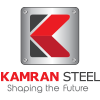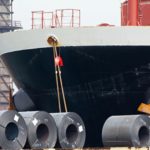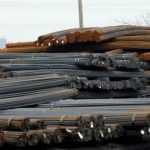Steel is the essence of contemporary construction whether it is lofty skyscrapers or far-reaching bridges or robust urban infrastructure. Its matchless strength, durability and flexibility make it the most preferred material on the globe. Nevertheless, this strength is accompanied by responsibility. Steel is bulky, cumbersome to work with and its transporting, storage, cutting, welding and installation on a construction site requires high safety precautions.
In the situation of project managers, making sure worker safety is not something that needs to be fulfilled as a requirement; but a core duty that plays a factor in terms of productivity, deadlines, cost and image of an entire project. Accidents relating to steel-varies; from trips during reinforcement bar placements to welding related hazards-can be tragic when regulation is not adhered to. It is not only the safety protocols in the steels that are a concern of the rules, but they are the matter of life, efficiency, and structural integrity in the long-term perspective.
It is the responsibility that Kamran Steel as one of the leading producers of steel in Pakistan has got the hang of. Kamran Steel provides high tensile steel bars of international standards, high-tensile steel billet and thus prospectively leads safe operations in construction and construction related projects in the country.
Safe Handling and Transportation after Steel
- Steel sections and bars are cumbersome and very bulky to carry around.
- Inappropriate loading and unloading may result in an injury or damage of material.
- All mechanical lifting machinery must always be used (cranes, forklifts, chain pulleys) rather than manual handling.
- PPE (helmet, gloves, safety shoes) is required to be worn when handling material.
- If steel bars are transported, they should be chained so that they can not roll or slip.
Table: Common Steel-Related Hazards vs. Safety Measures
| Hazard | Potential Risk | Safety Protocol |
| Falling Steel Bars | Severe injury/death | Secure stacking, use restraints |
| Welding Sparks | Burns, fire hazards | PPE, fire extinguishers, ventilation |
| Cutting Operations | Cuts, machine entrapments | Trained operators, safe distances, guards |
| Lifting Heavy Loads | Crane accidents, falling materials | Rigging checks, weight calculations, no under-loads |
| Working at Heights (Steel) | Falls, fractures, fatalities | Harnesses, lifelines, scaffolding safety |
Correct on-site storage of steel
- When storing steel in level areas, avoid storing in water log areas, as this would cause rustiness of the steel.
- Stack in a stabilized and orderly way the bars against collapse.
- Having different grades and diameters should be in separate and labeled packaging
- There are steel bars to guard them against environmental exposure.
Safety measures on cutting and bending
- Steel bars require special cutting and bending equipment.
- Employees are required to work at a safe distance away from machineries.
- Only trained operators are supposed to operate rebar cutting machines
- During hot work there must be the use of fire extinguishers to ensure that cutting sparks are controlled.
Welding and Hot Work Precautions
- Welding steel bars can introduce a lot of heat, sparks and poisonous fumes.
- Welders should have face shields and gloves and fireproof clothing.
- Good ventilation is also needed to avoid inhalation hazards.
- Fire watchers are to be available between and following welding.
Guidelines on Lifting and Rigging
- Calculate weight of steel loads before lifting at all times.
- Slings, hooks and cranes should be certified.
- Do not allow yourself to stand beneath suspended loads of steel.
- Conduct routine check up on rigging equipment.
Heights Working on Steel Structures
- When it comes to steel structures, there may be the need to work at great heights.
- Workers have to employ harnesses, lifelines and scaffoldings armed in guardrails.
- Pathways and footwear without slips decrease the risks.
- Highest training of all the workers on steel erection is mandatory by the project managers.
Personal Protective Equipment (PPE) Protocols Requirements
- Head protection helmets.
- Safety gloves to use around steel edges.
- Gum boots to avoid foot injuries which are caused by fallen bars.
- High visibility jackets so they can be seen on busy sites.
Wearing the right PPE is the first line of defense against accidents.
| Protective Equipment | Purpose |
| Safety helmets | Protect from falling steel or tools |
| Steel-toe boots | Prevent foot injuries from heavy loads |
| Gloves (cut-resistant) | Reduce cuts while handling bars |
| Welding masks & goggles | Protect eyes/face from sparks and UV rays |
| Ear protection | Reduce noise-related hearing damage |
| High-visibility vests | Increase visibility to avoid accidents |
How Kamran Steel Incurs in Safer Construction
Besides offering high-strength and durable steel bars and billets, Kamran Steel guarantees quality that conforms to international product standards (ASTM, BS, and PSQCA certified). The use of standard steel sizes, resistance to corrosion, and consistent quality adds direct safety to handling, the minimization of cut/welding risks and stability in construction.
Kamran Steel indirectly benefits the lives of workers by helping to eliminate site accidents, as well as creating long lasting structures by selling consistent and reliable steel to engineers, contractors and project managers.
Conclusion
Steel safety is not only about compliance- it is about the safety of the lives, reducing risks and making the buildings durable. To project managers, perfect steel safety procedures boil down to effective execution of their projects, cost management and on-time completion. Learn more about steel safety in Pakistan’s construction sector on Kamran Steel’s Steel High-Rise Construction page and consult relevant national safety and building regulations for comprehensive guidance.
As companies such as Kamran steel offer safe, standardized and high-quality steel, project managers can safely rely on applying best practices, safe in the knowledge that the material can be trusted.




Recent Comments